Emotiv Insight: the first acquaintance with the neurointerface
Emotiv Insight is a small portable neural interface. A couple of years ago (in 2013) I sponsored this project on Kickstarter for $ 330 (now available from $ 299). The initial dispatch date was set for March 2014, but I received it only today.
In this post, I will briefly describe the first acquaintance with Emotiv Insight, then an article will be published with an overview of the SDK and software from the point of view of the programmer.
Specifications
- Price: from 299 $
- 5 EEG sensors
- Uses LE Bluetooth 4.0
- Sensors: gyroscope, accelerometer, magnetometer
- Battery: Lithium Polymer 480mAh, promised battery life - at least 4 hours
- Weight: I didn’t find it in the documentation and I didn’t find enough sensitive scales, but I practically don’t feel the device on my head.
- The supplied software can recognize facial expressions and some emotions (smile, wink, surprise, interest), also has the ability to recognize some mental commands (up, down, pull, push, etc.) all of this naturally requires training and calibration. Promo video
Unpacking and appearance
A nice square box arrived, in a similar Mac mini sold.
Inside we have:
')
- 4 separate sensors.
- USB charging cable.
- Arc with a port for the sensor.
- The main part with the “on” button, charging port and one built-in sensor + 3 ports for installing sensors that go separately. And one port for installing an extra arc with a sensor.
Sensors are soft and translucent. All sensors, except those built into the main part, are interchangeable and for some reason are unevenly colored in green.
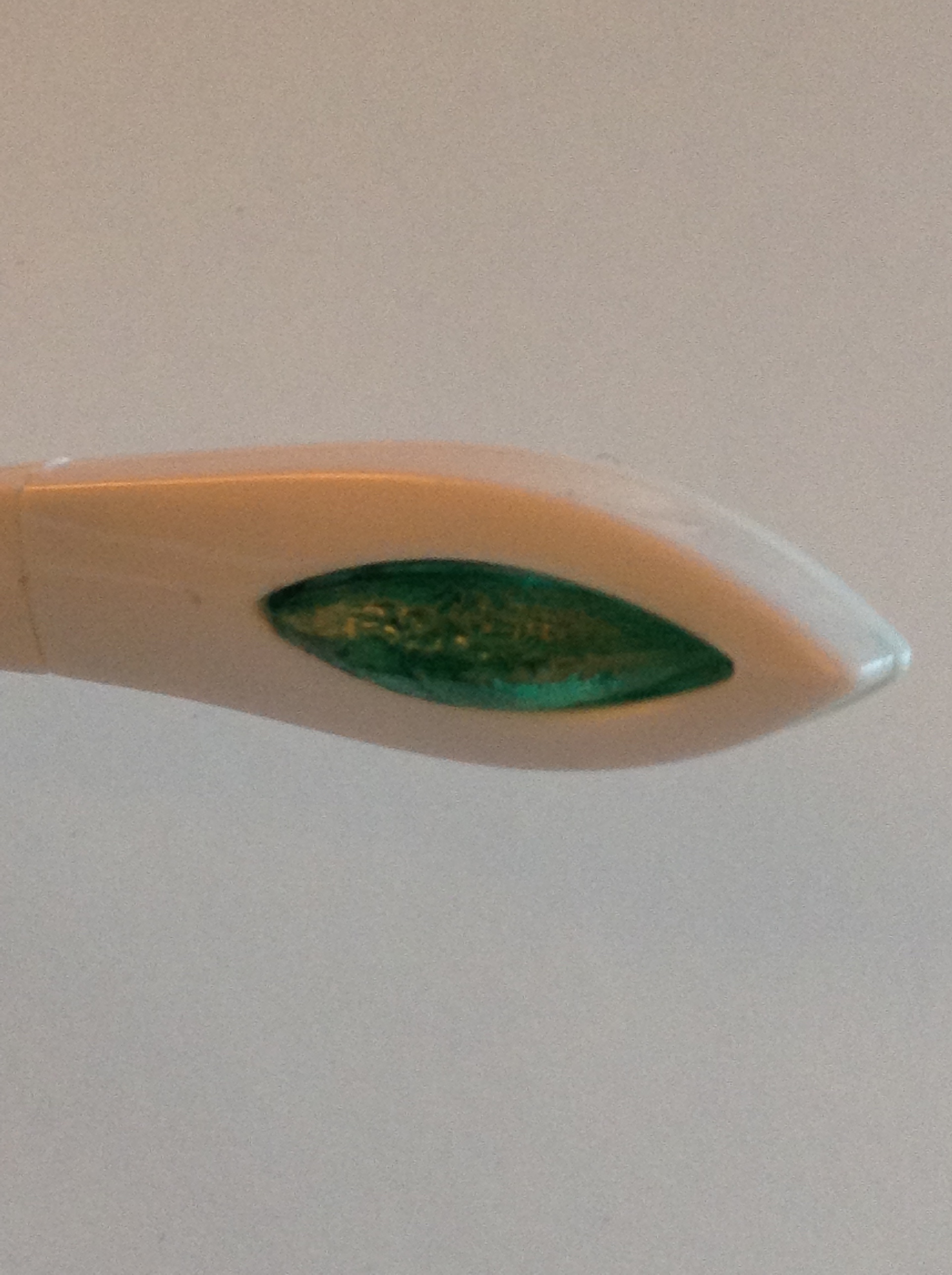
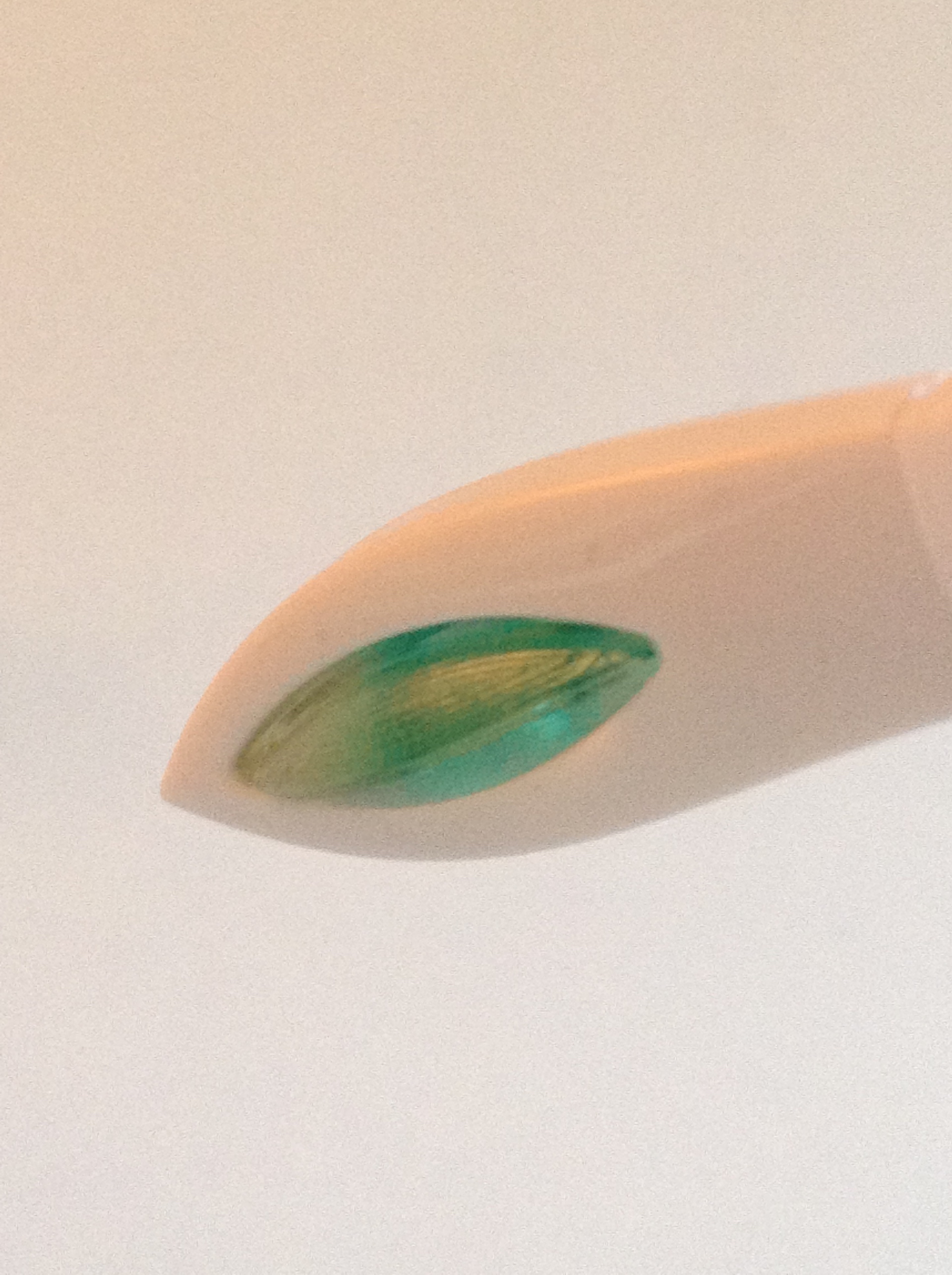
Assembly looks like this:
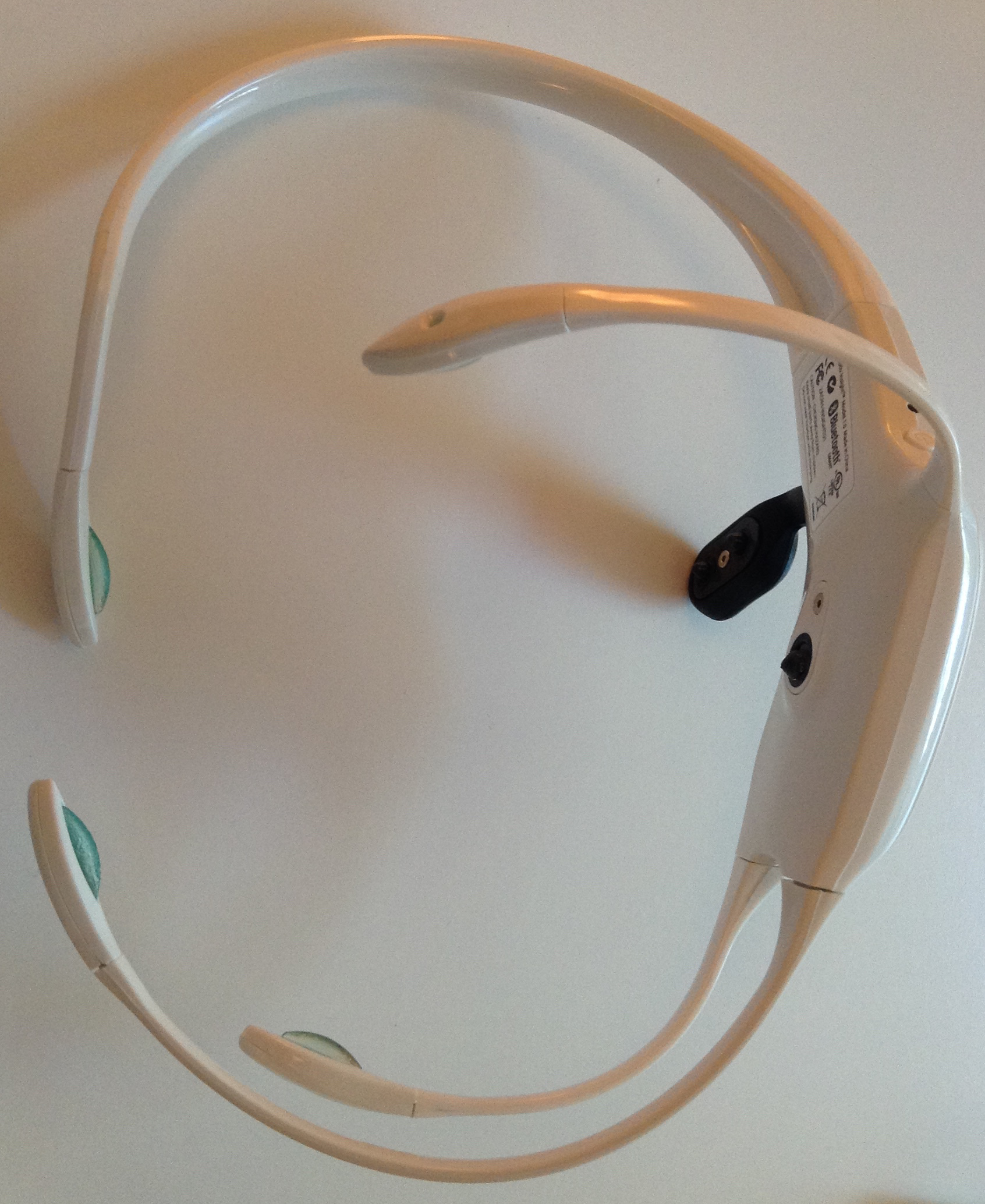
The arches are quite flexible, the whole structure sits comfortably on the head, but at first I sometimes felt unpleasantly pressed under my left ear, this detail:
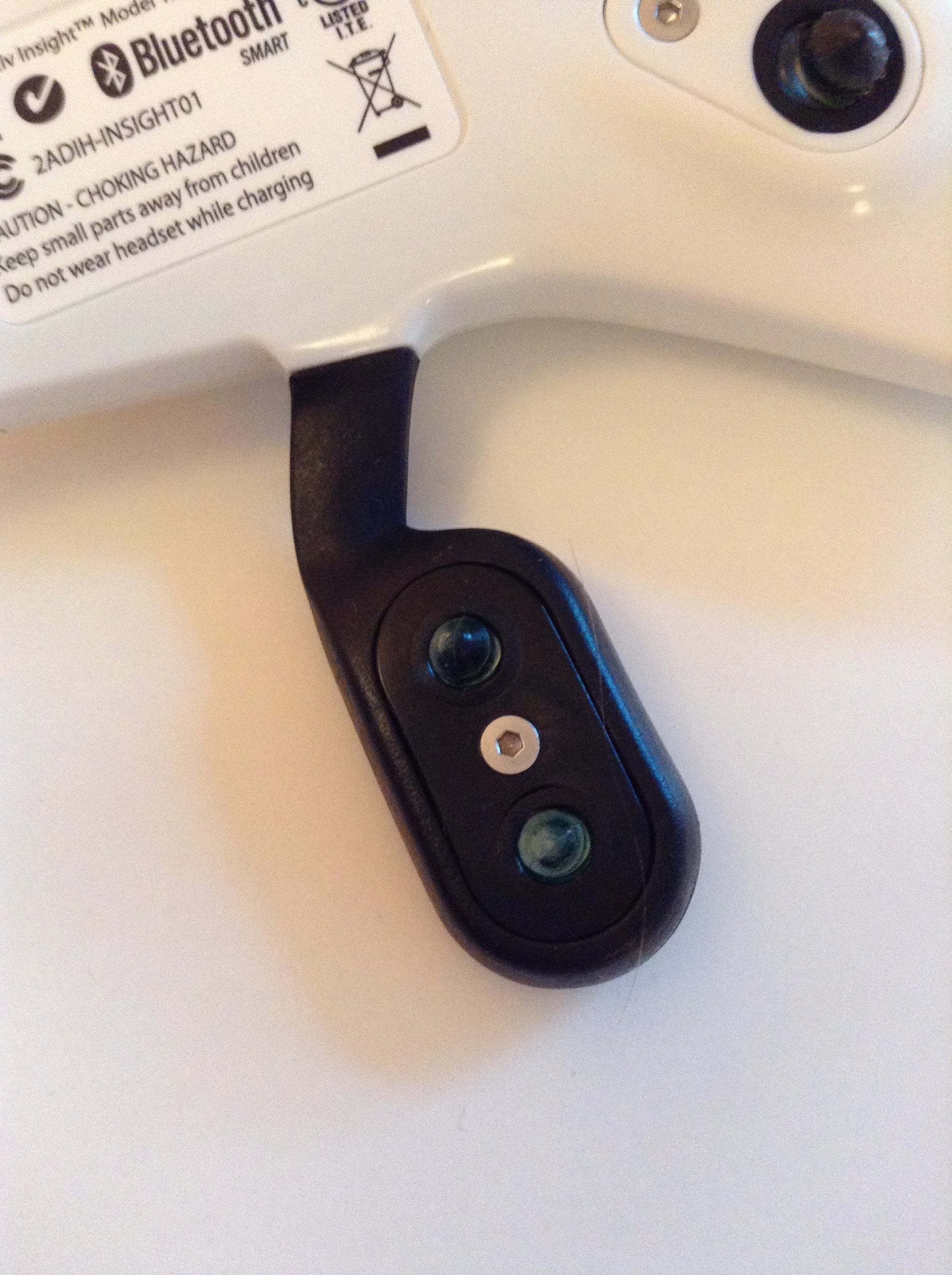
BY
It should be noted that the quality of all the software and documentation that came across to me was, frankly, bad. Unstable work, not intuitive interfaces. All software is scattered in different places, requires installation of plug-ins, does not work on some browsers, iOS is not currently supported, etc.
The first thing we face is the Control Panel . Works through the browser using the plugin. I managed to run it on Safari, first install the plugin - then launch it in the browser. Turn on Emotiv Insight and turn on Bluetooth on your computer and it all worked.

Green color shows us that the quality of the contact sensors with my head is good, and black - that it is not. It is necessary to press the sensor closer to the top of the head, apparently the hair is in the way.
First, go to the Facial Expressions section of the control panel.
I am glad that I am writing an article on Geektimes:
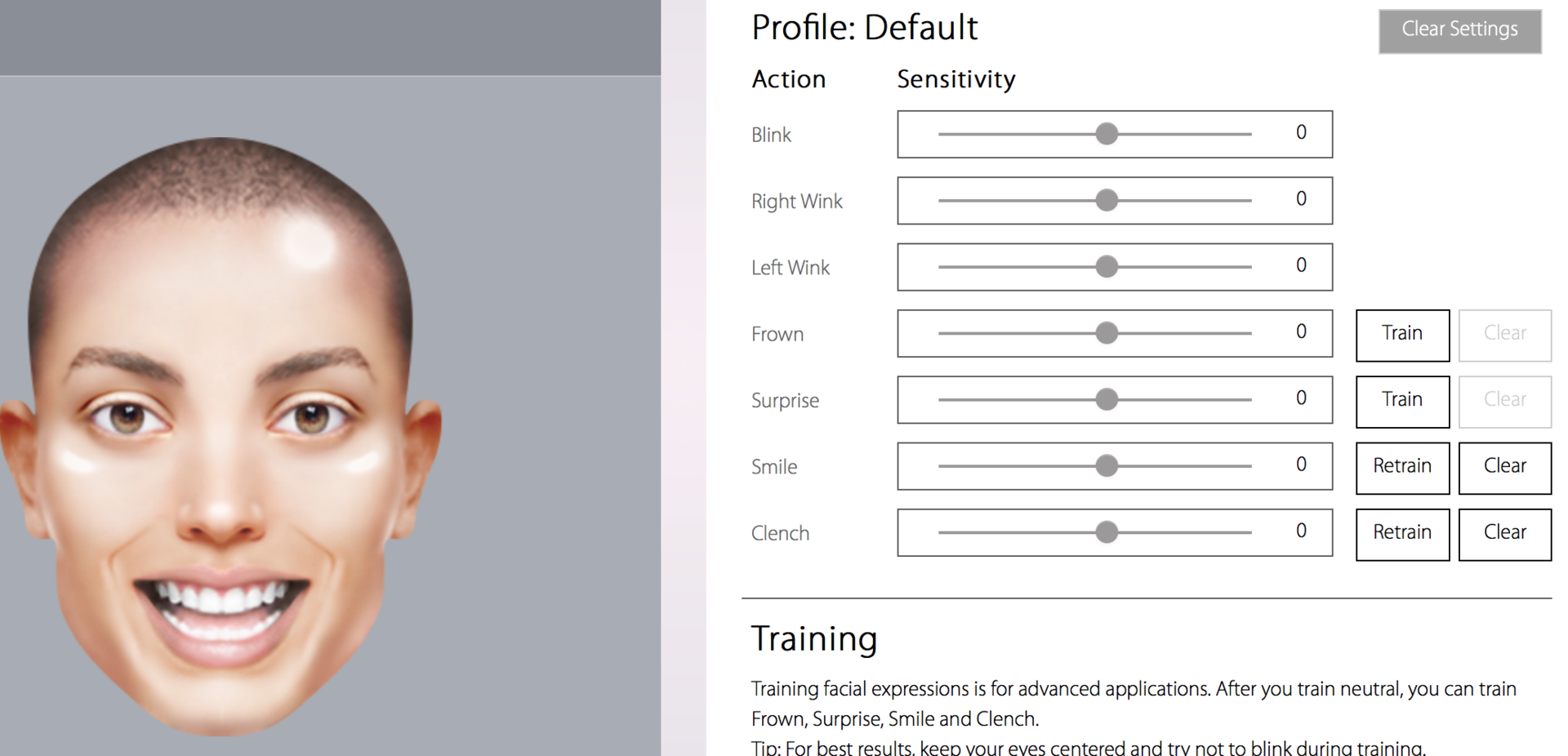
And I'm angry for no reason

The program detects a good wink, but quite often false positives occur on any facial expressions. Therefore, the girl is always sausage, maybe more thorough training can fix it.
You can teach 4th expressions:
- Frowning
- Surprise
- Smile
- Voltage
Now go to the Performance Metrics section.
Probably this data can be the most useful for any real research.
This graph shows the activity of my brain at the time of familiarization with the schedule of activity of my brain:
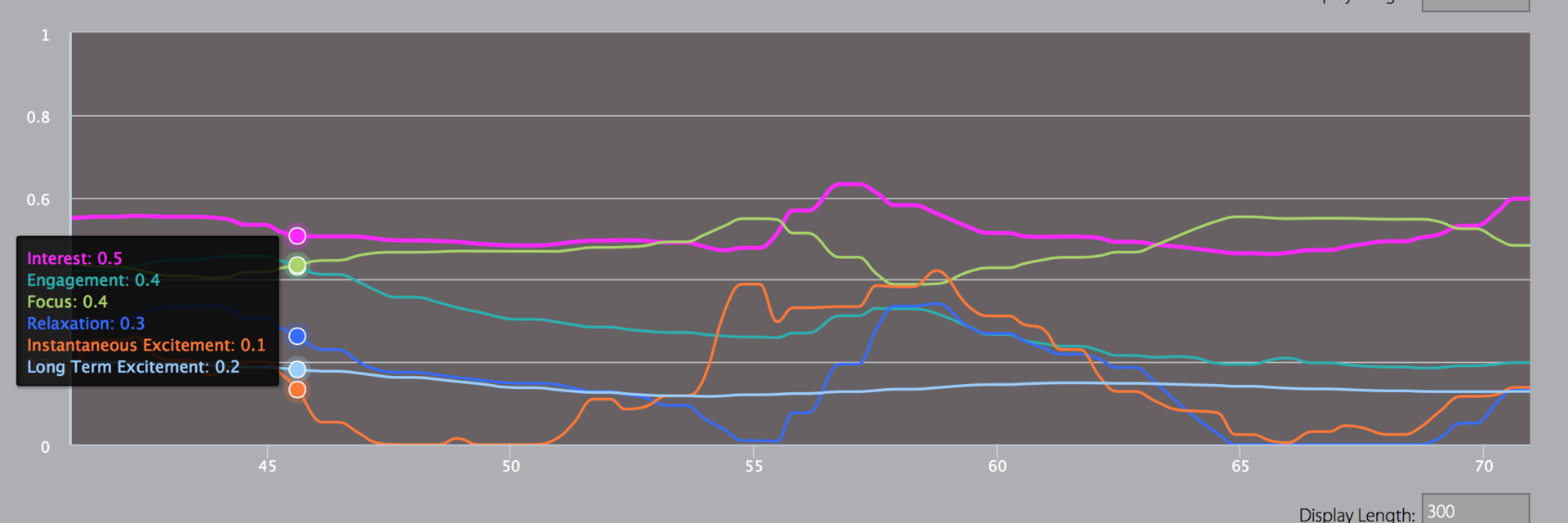
As you can see, he gives us some assessment on such parameters as:
Interest, involvement, concentration, relaxation, instant excitement, prolonged excitement.
Now the most interesting is mental commands.
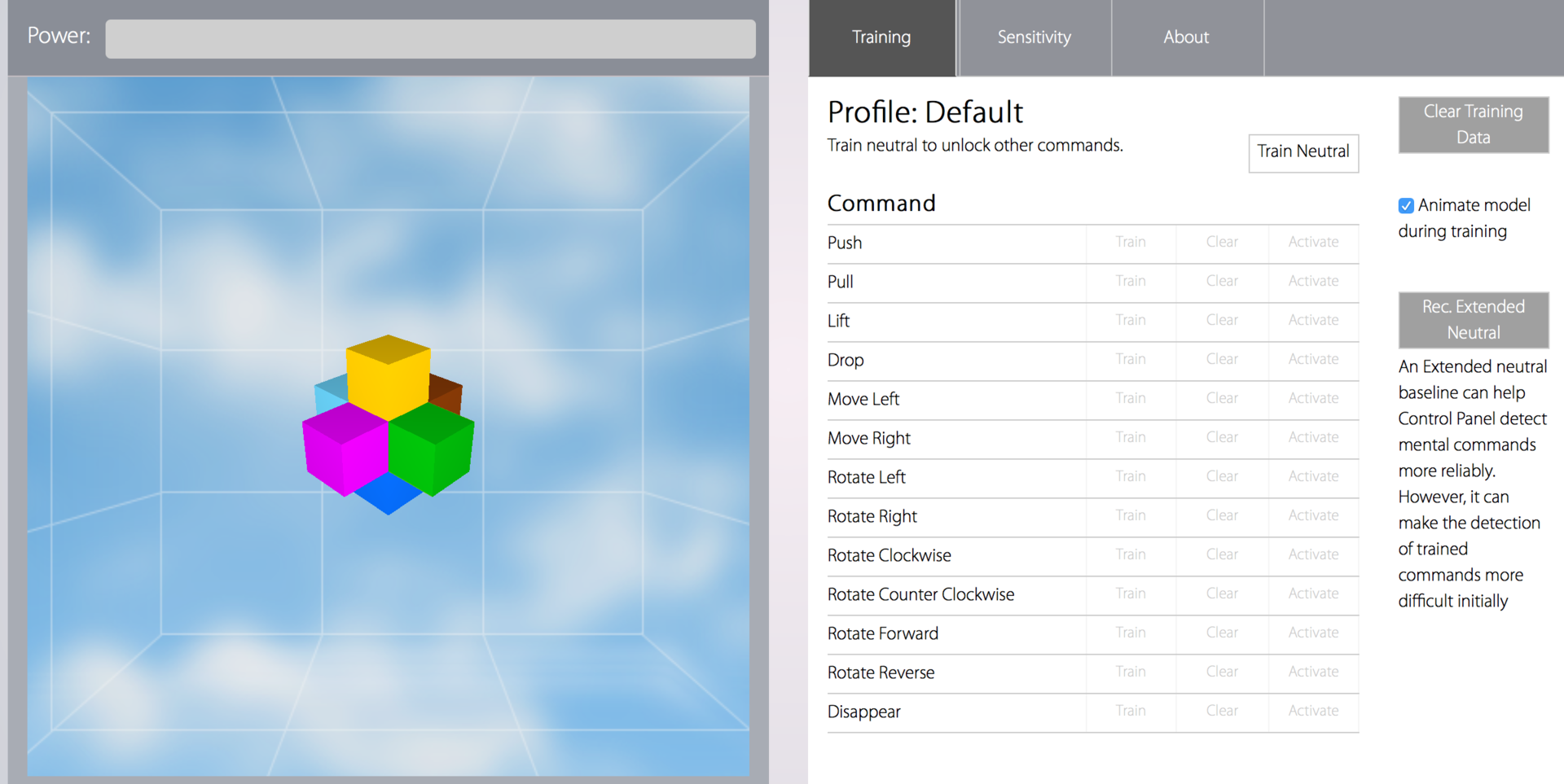
Here we are trying to mentally control the object, first we teach the program what our thoughts to interpret as “Push”, “Push”, “Left”, etc. In addition, each action has an indicator of intensity.
The main disappointment: at one time only two teams can be active.
That is, we either just pull or push, or just turn or lift, etc.
We cannot apply a full set of actions to an object.
Here I found some more applications and examples that can be downloaded.
There are 2 interesting programs.
The first is Emotiv Xavier Emo Key - a program that can respond to the events that I described above (Mimicry, mental commands, etc.) and send keyboard events (Short cut or just text) to the application you are working with.
That sounds great, isn't it? You can, for example, just think about opening the search dialog or changing the keyboard layout. But do not forget about the limitation of 2 commands in the Control Panel - perhaps it is there for a reason, and it is unlikely we will be able to use more commands here. Besides, I haven’t managed to get anything from this to work on a Mac, I sent a couple of requests for support and I am waiting for answers, I hope Windows users are more fortunate.
This is what this program looks like.
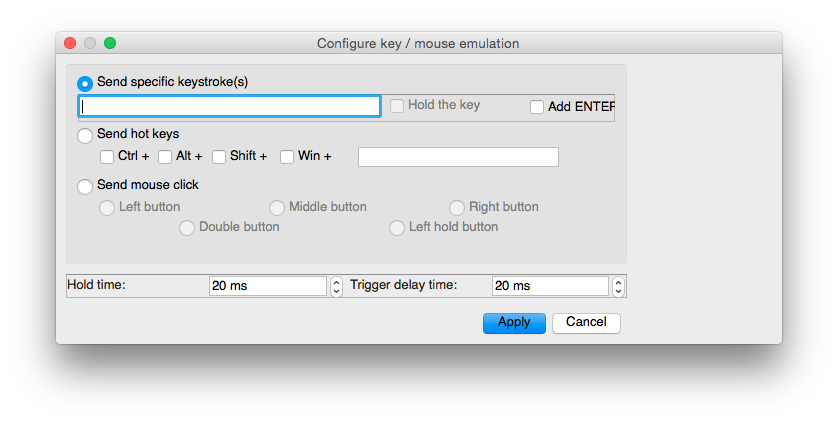
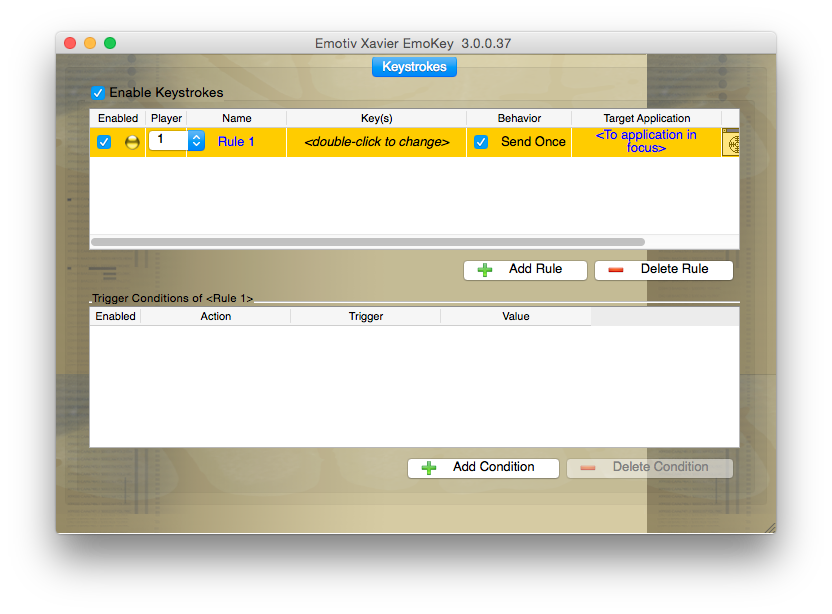
The second program will be more interesting to programmers.
This is an Emotiv device emulator - Emotiv Xavier Composer.
Actually emulates sending various commands or parameters from the brain.
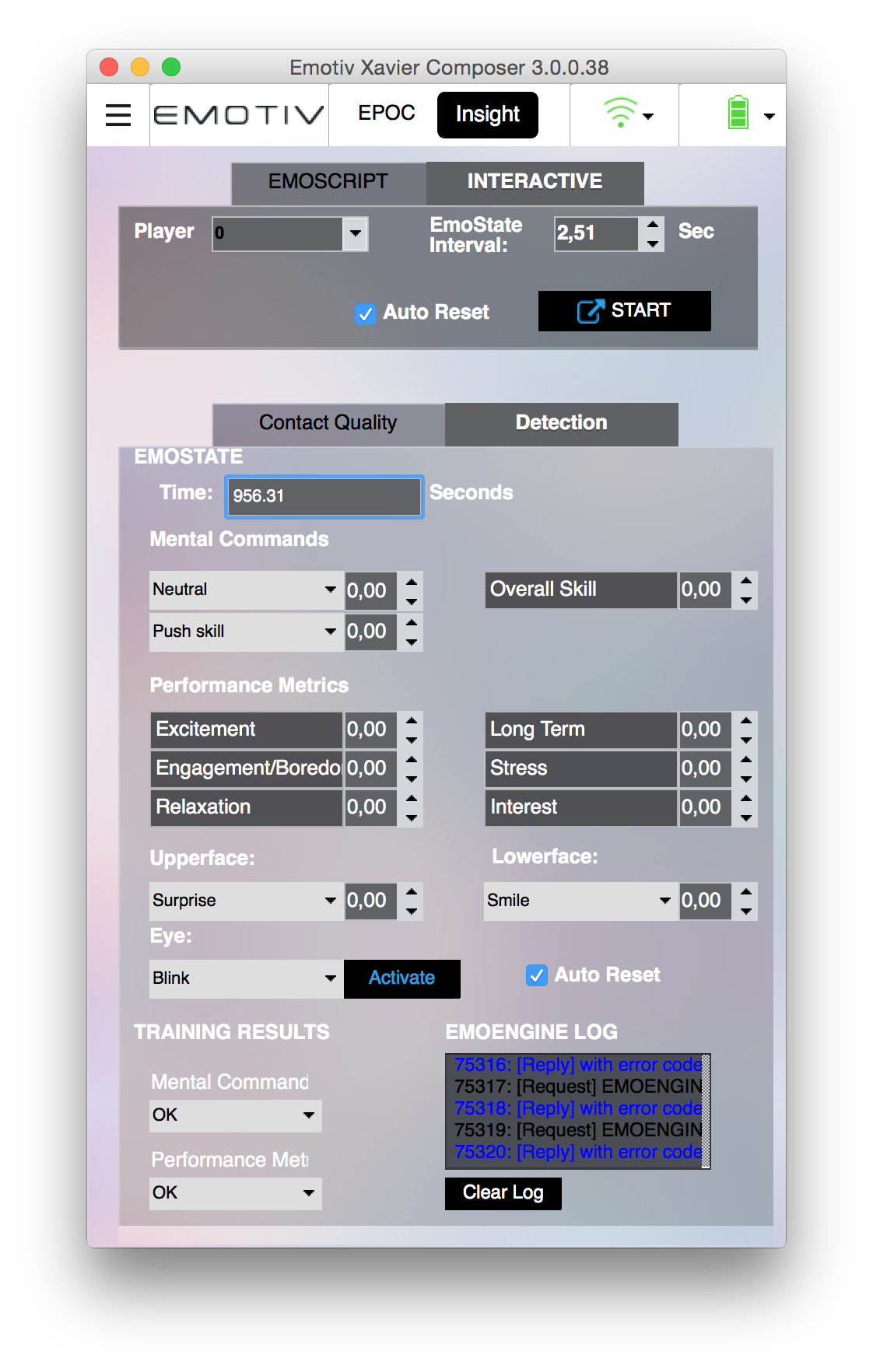
There is also an app store emotiv.com/store/app
If you have a Mac, then you are unlucky, there are no third-party Mac applications in the official store (according to the Mac / Insight filter, one is issued, but it is actually only for Windows)
You also have access to the SDK, with which you can create the software yourself, the SDK review and the perception of Emotiv Insight from the programmer’s point of view will be presented in another post.
disadvantages
- Not everything looks smooth. Somewhere not tightly joined parts, somewhere asymmetrically poured sensors
- At the moment there is little software
- Software quality
- Currently not working with iOS
- Cannot charge and use at the same time.
- You need to make sure that the device does not charge for too long - manufacturers warn that it is harmful to the battery
Despite the shortcomings, I still hope that something good will come out of it, because not all the components have yet been developed, and the device itself is just starting to be sold. It is interesting that third-party developers will come up.
I would like people with this device to share links to third-party software and resources related to this device. Thank.
Source: https://habr.com/ru/post/366005/
All Articles